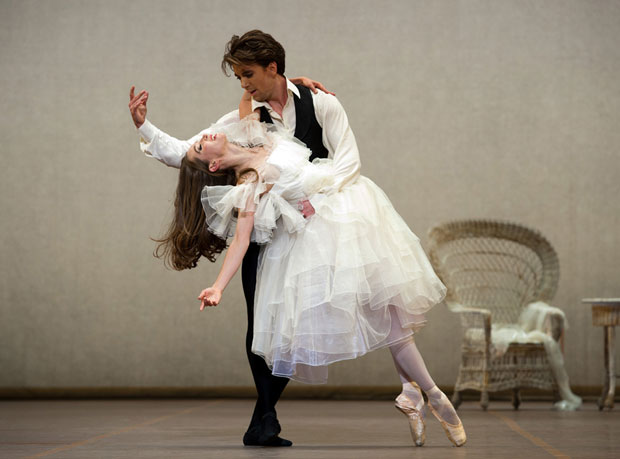
Royal Danish Ballet
Lady of the Camellias (Kameliadamen)
Copenhagen, Royal Theatre
2,3 April 2012
kglteater.dk
By the second or third curtain-call almost everyone in the audience was standing to applaud, and – somewhat to my surprise – I was happily and enthusiastically joining in. We’d just seen the Royal Danish Ballet bring off one of those occasional performances that will stick in the memory for years, taking a flawed and awkward ballet – John Neumeier’s Lady of the Camellias – and by sheer talent turning it into a deeply rewarding artistic and emotional experience. And the next night, with a different cast, they did it again, more quietly perhaps but still with an intensity I won’t soon forget.
It’s taken the RDB a surprisingly long time to acquire this piece. Neumeier is a favourite in Copenhagen – his Romeo and Juliet is never out of the repertory for long – and Camellias, with its juicy leading roles and long cast of other characters, would seem a perfect fit for a company that values story-telling above almost all else. Made for the Stuttgart Ballet in 1978, it has been adopted since then by half-a-dozen European companies as well as by American Ballet Theatre; Nikolaj Hübbe writes of his burning desire to bring it to Denmark, and the overwhelmingly positive audience reactions and the near-full houses must tell him his instinct was right.
My own surprise at its success reflects a half-remembered disappointment when the Stuttgart Ballet brought it to London quite early in its life: we were then still very much in thrall to Frederick Ashton’s condensed, hectic and out-and-out romantic Marguerite and Armand, and perhaps Neumeier’s more expansive three acts seemed pale and unfocused in comparison. Now, taking a more disinterested view, it’s fascinating to see what a very different approach the younger choreographer takes – not quite the opposite extreme (that would need a MacMillan version, probably starting and ending with the bit where Armand insists on having Marguerite’s body exhumed), but taking a much wider view of the story and setting it in a context which Ashton all but ignored. His choice of composer also imposes a very different tone: where Liszt’s overt emotion sets the pace of the Ashton piece, Neumeier’s selection from Chopin’s piano works allows a wider range of mood and a more leisurely exposition. Pianists, Julian Thurber on stage, and Roberto Cominati in the pit, do justice to the score, but it’s a serious problem that so many of the pieces are so closely connected for ballet-goers with other choreography, especially Ashton’s Month in the Country and Jerome Robbins’s Dances at a Gathering.
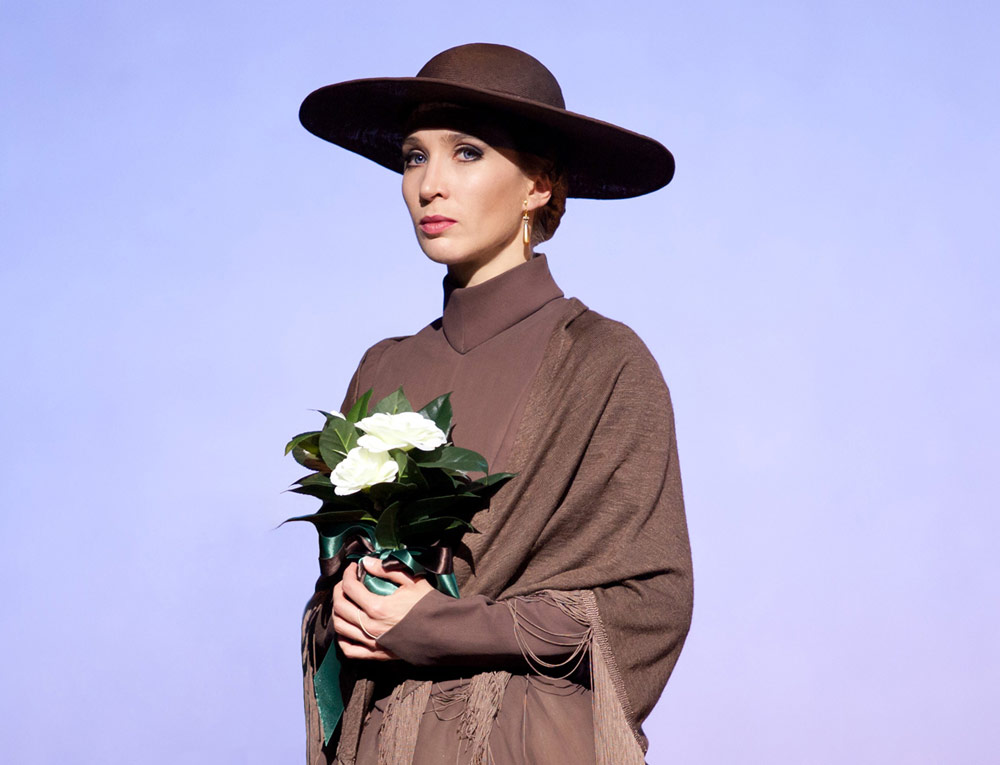
Some of Neumeier’s ideas are immediately impressive, some take time to make their mark, some simply don’t work. He sticks quite closely to the plot of the original Alexandre Dumas novel, adapting it only to fit the different narrative capability of his medium. So a distraught Armand encounters his father at the sale of Marguerite’s belongings; breaking down, he starts to tell him his tragic story, and the events unfold in long flashbacks – a neat device , but one that eventually loses its emotional resonance through over-repetition. The most significant innovation is the way Neumeier expands Dumas’ reference to another doomed love affair, that of Manon Lescaut and the Chevalier des Grieux. These two characters are first seen in a ballet-within-the-ballet but later become part of Marguerite’s dreams and fantasies: Neumeier uses them to mirror his heroine’s own situation, to warn her and eventually to console her. It seems a rather far-fetched notion at first but by the end of the ballet I was converted by its dramatic usefulness.
As expected, the central story is told in a series of pas de deux, the best of them wonderfully characterised; what surprised me was the layer of gritty realism underlying the high romance. There are moments which genuinely shock, as when Marguerite’s protector, the elderly Duke – something of a caricature until then – comes naked to her bed after she has left Armand, and Marguerite’s lonely death is a far cry from the romantic ecstasy of Ashton’s version. Neumeier also shows us much more of the Parisian demi-monde in which Marguerite plies her trade, and I think this is much the weakest strand of the ballet. For instance, the second act opens with a long series of dances for some of the minor characters – friends, suitors, guests. It’s a divertissement, there to pad out the evening and give the principals a rest, and however hard the dancers try to make it work – and they do try, they really do – they can’t disguise its banality. (And it’s not helped by being set to the long waltz which forms the centrepiece of Dances at a Gathering.) Fortunately the Duke, too, loses patience with all this footling around and breaks up the party, and the rest of the act is something else entirely: an enchanting pas de deux for the lovers is followed by the powerful confrontation between Marguerite and Armand’s father, and the two sections lift the ballet to a completely different plane, where it stays – more or less – until the final curtain.
From the thirty or so dancers I saw in featured roles over two performances, a few stand out even from the general high standard. Both Sebastian Klobborg and Jón Axel Franssen had fun with Marguerite’s hopeless and hapless suitor, known only as Grev N.; Shelby Elsbree and Hilary Guswiler (who has a wonderfully disdainful glance when she chooses) alternated as Olympia – a minor role but even so a more interesting one than the more prominently featured Prudence, who gets a solo of her own but whose dramatic significance is unclear. Maybe she’s just there to provide a partner for the much better defined Gaston Rieux, a friend of Armand’s and strongly danced by both Marcin Kupinski and Jonathan Chmelensky (who seems to be having a particularly good season). Interesting casting of the role of Marguerite’s maid contrasted character dancer Mette Bødtcher with apprentice Astrid Elbo, who had a dignity of her own despite being really too young for the character.
The first cast Manon and des Grieux were J’aime Crandall and Mads Blangstrup – she seen at her best in the later scenes, where her relationship with Marguerite seemed really touching, he skipping quickly over his strange first appearance as some kind of fool (is he reflecting Armand’s early besottedness? or what?) and reverting to his customary elegance. Lena-Maria Gruber, the next night, was stronger to start with but didn’t have quite Crandall’s empathy later on, and Gregory Dean showed what a beautiful line he has.
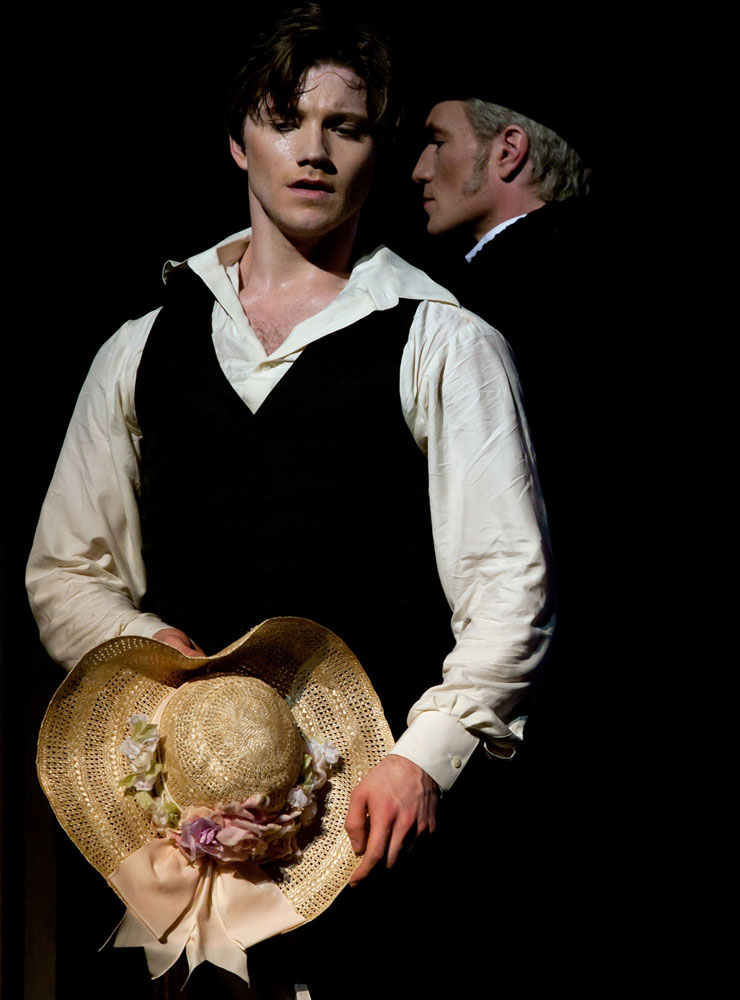
One of the big stories of these performances was the return to the stage of Hübbe himself, granite-faced and stiff-backed as Armand’s father, apparently implacable in his ultimatum to Marguerite but very moving in the end as he kissed the hand he’d scornfully rejected at the start of their encounter. Jean-Lucien Massot, less imprisoned by propriety, was more human and kinder, too, and seemed to have an easier relationship with his son – it was only at one moment of the highest emotion that Hübbe was able to let his love show.
But of course it’s the two lovers who carry the evening. The most effective of them all, I thought, was the first cast Armand, Alban Lendorf. His onstage persona – totally sincere, open and just a little naïve – is perfect for the role; he’s so trusting and so obviously heading for tragedy that even in the earlier scenes you are filled with compassion for him and fear for his future. It goes without saying by now that his dancing is accurate, beautiful and expressive, and he managed the fearsome partnering in the many pas de deux with no appearance of strain. Ulrik Birkkjær, the next night, equals him for charm, but despite his big blue eyes there’s just a touch more self-awareness about his Armand: he’ll suffer, yes, but it won’t mark him for life. (I could imagine Birkkjær making a fine Onegin one day, whereas at present one would imagine that role to be right outside Lendorf’s range.)
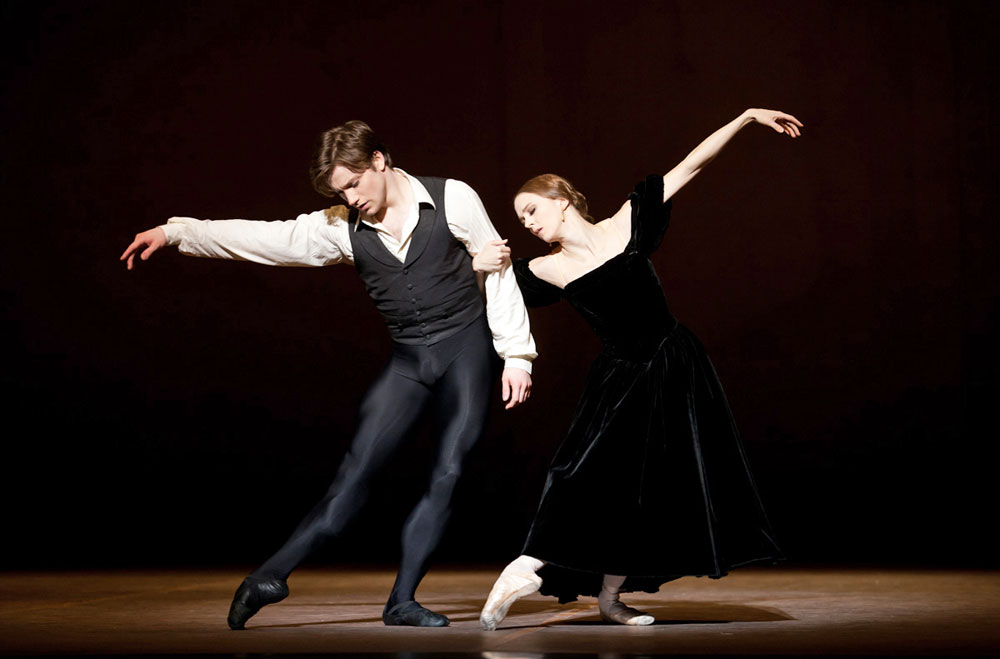
Lendorf’s Marguerite was Susanne Grinder, in probably the finest performance I’ve yet seen from her. Neumeier, writing about Marcia Haydee, said she had ‘a combination of vulnerablity and a glow of inner strength’ which made him know Marguerite would be her role: Grinder at present has more of the former than the latter, which makes it a little hard to imagine her as the most famous courtesan in Paris but stands her in very good stead in the later scenes, and she’s very sweet in the ‘country’ pas de deux when she’s finally cast her lot in with Armand and for a few minutes can enjoy carefree new love. Gudrun Bojesen, on the other hand, has the inner strength, and also the acting skills to make her every gesture count. She’s much more sophisticated and confident than Grinder at first, but what I’ll remember most is the episode right at the end of the ballet where she makes a last visit to the theatre. Untidy, clumsily rouged and very ill, she takes a latecomer for Armand, and her realisation that she is mistaken brings home to her the reality of her situation: the shock and despair as she she looks out at us tells us she knows death is very close – it’s utterly harrowing, great acting.
It’s said that for financial reasons there will be no more performances of Lady of the Camellias here after this run – that would be a little tragedy of its own: these dancers deserve the chance to grow in their roles and their audience deserves the opportunity to see them do it. Let’s hope some way will be found to make it happen.










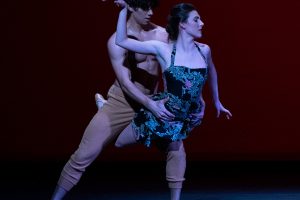



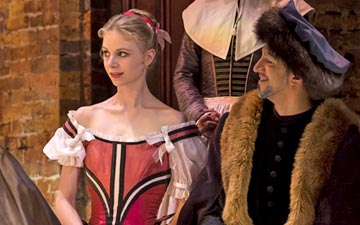
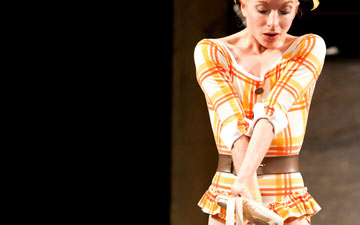

You must be logged in to post a comment.